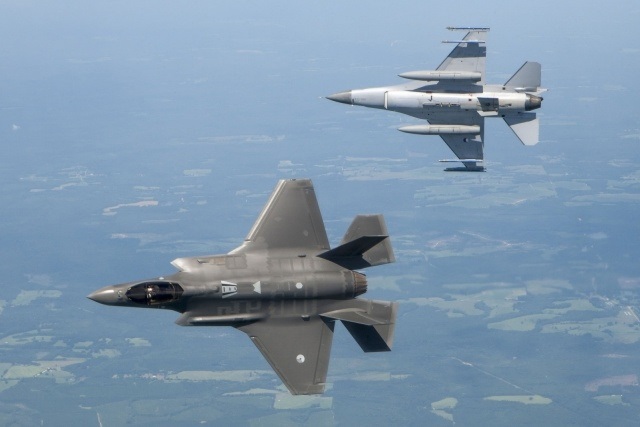F-16 - Aircraft Selection to NATO.

For years, the Lockheef
F-104G Starfighter was the backbone of the NATO air force. In
the mid-seventies, it had to be replaced. The Germans and
Italians had already made up their
minds. Together with the British, they chose the Panavia
Tornado aircraft. This was a very advanced,
high-performance, multi-purpose,
all-weather, versatile and therefore somewhat
expensive aircraft. The other European
countries, Norway, Belgium and the
Netherlands, agreed that the Tornado would strain their
budgets. For these reasons, they started looking for a less costly
aircraft.
This search brought us to the so-called
"Sale of the
Century".
There were four candidates,
two American and two European aircraft.
The most competitive and leading company
in Europe was France's Dassault-Breguet, Mirage F1-E/M53,
Other European countries are Sweden's Saab-Scania JA-37 Viggen,
The United States also has the Northrop F17 Cobra and General Dynamics also had F16 aircraft, which had not yet been named at that time.
For a long time, no state
could agree on an aircraft.
Then, in
early 1974, these countries agreed among themselves to set up a consortium
for purchases. This would make
things easier.
For the Belgians it was a contradictory choice to buy a Swedish aeroplane over a French one and for the
Norwegians it was just as absurd to buy a French aeroplane over a Swedish one.
In fact, the choice
of European or American aircraft seemed to have
been decided, but the real problem was that the
United States was not very favourable to the American
F-16 or F-17 aircraft, which the Europeans
did not prefer. The Pentagon could not be convinced.
Then
SOMETHING happened and the Pentagon announced that it would buy a total of 650
F-16s or F-17s. After this announcement, things accelerated. In a very short
time as people with suitcases visited countries, preferences began to be determined
and in January 1975, Pentagon
announced the F-16, which had not even been named yet, as the official aircraft
of NATO.
The US Air Force ordered 15 aircraft in the first phase and
then reduced the number to
8. The US Navy, on the other hand,
said they had nothing to do with this
aircraft.
What actually happened was that the
European Participant Group (Belgium, Denmark, the Netherlands
and Norway) entered into an agreement to manufacture
the aircraft at their own facilities
in Europe. Fokker's Oost in
the Netherlands, SABCA's Gossellies in Belgium, Kongsberg Vaapenfabrikk in Norway and Terma A/S in Denmark were to
produce the aircraft for EPAF (European Participation Air Forces). EPAF signed a contract for 348 aircraft at the Paris Air Shows.
116 for Belgium, 58 for Denmark, 102 for the Netherlands
and 72 for Norway.
The first sample aircraft
left the factory on 20 October 1976 and made its
first flight on 8 December 1976. The F-16A model was finally produced
on 7 August 1978. Belgium received the first
aircraft on 15 February
1978. The date of the first aircraft
accepted by the US Air Force was 6 January 1979. Later, Turkey joined
this production network towards the end
of the 1980s (TAI). Later again in parallel with technology, this aircraft kept
pace with developments, that is, its construction and development continued while flying.
Political changes in some European countries also changed the face of the F-16. It changed from an imperialist appearance to an aggressive toughness, but this transformation had no effect on the performance of the aircraft.! The new G capability of the F-16 also caused a change in the position of the pilot's seat. The seat was tilted back a little, which would later cause neck pain. The change was not limited to this. Even before the aircraft was put on the production line, changes were already being made. This change is still ongoing. Otherwise, how could an aircraft whose plans were drawn 40 years ago still be flying?
Anyway. The Dutch favoured
the traditional "Jib" position because it was always there and
no one ever complained about it. At that time Commodor games were just
being played and the Joy-Stick
seemed to be no problem for youngsters who had never held a crowbar.
What about the old ones?
How would the experienced pilots who had used the
Joy-Stick for years welcome this
innovation? By playing Commodor with their children
at home!
There were three options
for navigation and fire control display. The Electronic Combat Unit was a complexity
in itself, and I will explain its
historical development in another article.
As a result, not the best aircraft in the world, but the best marketable aircraft was accepted as the NATO standard.
The
F-16, which flies today as a NATO aircraft, was not even the
choice of the US Army.
081104